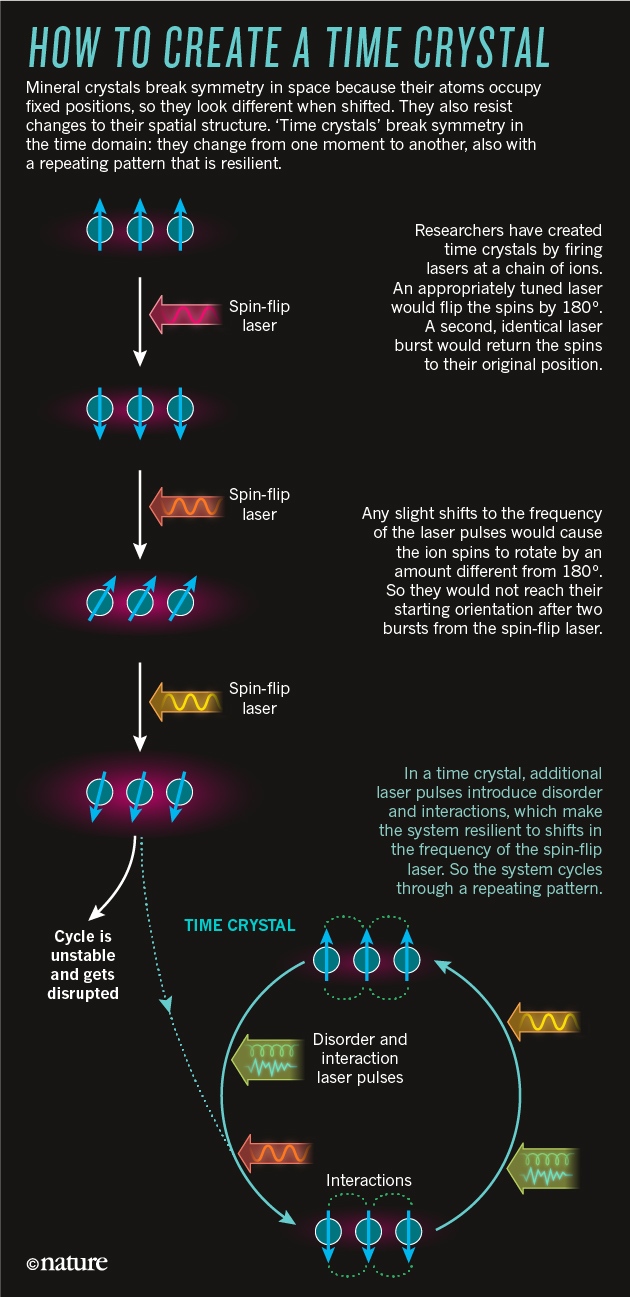The quest to crystallize time
Bizarre forms of matter called time crystals were supposed to be physically impossible. Now they’re not.
 Nik Spencer/Nature
Nik Spencer/Nature
Christopher Monroe spends his life poking at atoms with light. He arranges them into rings and chains and then massages them with lasers to explore their properties and make basic quantum computers. Last year, he decided to try something seemingly impossible: to create a time crystal.
The name sounds like a prop from Doctor Who, but it has roots in actual physics. Time crystals are hypothetical structures that pulse without requiring any energy — like a ticking clock that never needs winding. The pattern repeats in time in much the same way that the atoms of a crystal repeat in space. The idea was so challenging that when Nobel prizewinning physicist Frank Wilczek proposed the provocative concept1 in 2012, other researchers quickly proved there was no way to create time crystals.
But there was a loophole — and researchers in a separate branch of physics found a way to exploit the gap. Monroe, a physicist at the University of Maryland in College Park, and his team used chains of atoms they had constructed for other purposes to make a version of a time crystal2 (see ‘How to create a time crystal’). “I would say it sort of fell in our laps,” says Monroe.
